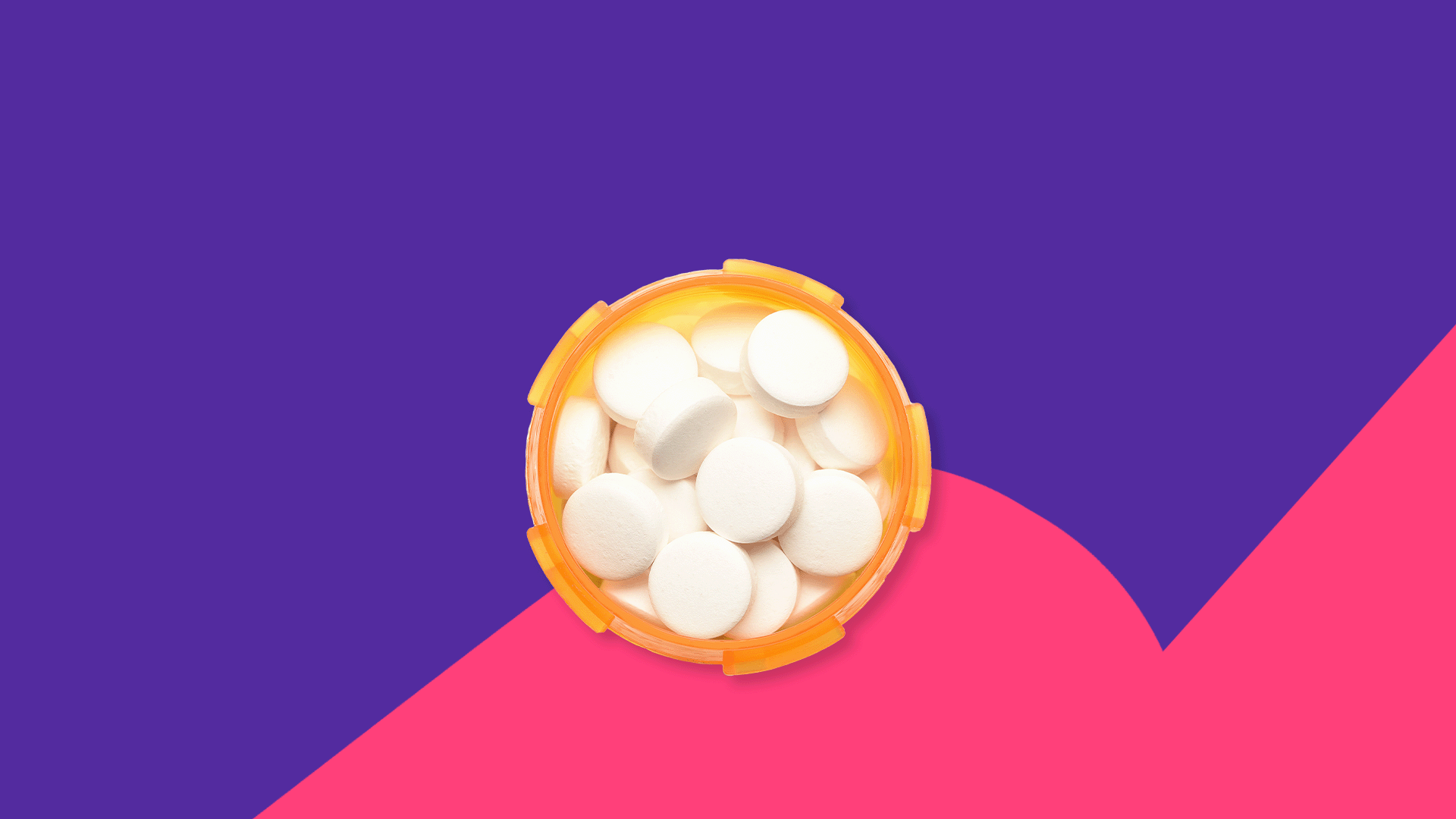Common prednisone side effects | Serious side effects | Insomnia | Weight gain | Hair loss | Constipation | Side effects timeline | Contraindications | Warnings | Interactions | How to avoid side effects | How to treat side effects
Prednisone is a generic prescription drug prescribed for many medical conditions including allergic reactions, inflammatory arthritis, cancer, autoimmune diseases, irritable bowel syndrome (IBS), lung disorders, endocrine disorders, blood disorders, connective tissue disorders, and organ transplants.
As a corticosteroid, prednisone primarily affects the immune system to reduce inflammation. Unfortunately, it also has a rich variety of side effects. At a low dose for a short time, prednisone can provide tremendous benefits without serious problems. High-dose or long-term treatment may be needed for certain conditions, but is also associated with more side effects. Not all prednisone side effects are avoidable, but they may be minimized or managed.
Common side effects of prednisone
Prednisone has a long list of common side effects affecting just about every system in the body. Most people—about 2 in every 3—will experience some side effects when taking prednisone. Common side effects include:
- Stomach pain
- Nausea and vomiting
- Face puffiness
- Facial redness
- Unwanted hair growth
- Acne
- Weight gain
- Changes in appetite
- Mood swings
- Agitation
- Rash
- Hives
- Thinning or discoloration of the skin
- Fluid retention and swelling
- Sweating
- Sodium retention
- Potassium loss
- Elevated blood pressure
- Elevated pressure in the eyes
- Increased blood glucose
- Headache
- Slow wound healing
- Menstrual changes
Serious side effects of prednisone
Serious side effects are more likely when taken in high doses or for a long time. These include:
- Steroid psychosis
- Muscle damage
- Infection
- Diabetes
- High blood pressure
- Seizures
- Congestive heart failure
- Peptic ulcer or gastrointestinal perforation
- Swelling of the pancreas
- Bone tissue death
- Tendon rupture
- Bulging eyes
- Increased pressure in the brain
- Severe or life-threatening allergic reactions
- Withdrawal or adrenal gland insufficiency
When taken over the long term, serious side effects might also involve:
- Bone loss (osteoporosis)
- Glaucoma
- Cataracts
- Serious infections
- Growth suppression in children
- Cushing syndrome
Insomnia
While the incidence is not known, sleep problems are a common complaint in people taking prednisone. It may not always affect total sleep time, but people taking prednisone may wake up during the night more than usual and feel less rested in addition to having problems falling asleep. People can try to take prednisone early in the day and practice good sleep hygiene. If sleep quality becomes a problem, ask for medical advice from a healthcare professional.
Weight gain
When taken continuously for a long enough time, corticosteroids are associated with weight gain. In one study, 70% of people taking corticosteroids for 60 days gained some weight. Part of this is due to increased appetite and part is due to a change in the body’s metabolism. Fluid retention also adds weight, but this will go away when steroid treatment is stopped. People taking a short course of prednisone shouldn’t be concerned, but when taken for weeks or months at a time, the best solution is to talk to a nutritionist or other healthcare professional about a fitness and diet program.
Hair loss
In some people, prednisone and other corticosteroids may accelerate hair thinning, but the incidence is unknown. However, they may also cause unwanted hair growth. Talk to a healthcare provider if hair loss or unwanted growth is becoming problematic.
Constipation
Some people experience constipation when taking prednisone. It’s unclear why systemic corticosteroids may cause constipation, but it seems to be dose-related. Constipation can be managed through fluid intake, fiber intake, and medications, so talk to a healthcare provider if constipation is a problem when taking prednisone.
Prednisone side effects in women vs. men
Women may be more vulnerable to prednisone side effects. In one study, more women experienced side effects than men (95% versus 81%), including intolerable side effects (77% versus 50%). The exact reasons aren’t known. Studies have shown that men eliminate prednisolone, the active version of prednisone, from the body faster than women, which may be a factor. Age may also be a factor because women past menopause clear prednisolone from the body more slowly than premenopausal women. No matter the reason, always get medical advice when the problems seem to outweigh the benefits of a drug.
How soon do prednisone side effects start?
When a prednisone tablet is taken, it is rapidly and almost fully absorbed into the body, and will reach peak concentration in one or two hours. Some side effects such as headache, insomnia, abdominal pain, and mood problems can come on within that short period. Others such as fluid retention, skin problems, and increased appetite will take a few days or weeks to become a problem. Some side effects are experienced more commonly by people taking prednisone for longer periods of time, including weight gain, facial puffiness, and thinning hair. Many of the most serious side effects occur with long-term use or high doses.
How long do prednisone side effects last?
The body clears prednisolone, the active version of prednisone, pretty slowly. The half-life ranges anywhere from 18 to 36 hours, so it may take a few days for side effects like headache, mood swings, or irritability to start getting better. Some side effects, such as weight gain, swelling, hair loss, or skin problems may take a few weeks or months to return to normal.
What are the long-term side effects of prednisone?
Even after prednisone has been stopped, some side effects may have long-term consequences, such as bone loss, muscle damage, glaucoma, cataracts, and heart failure.
Prednisone contraindications
Some medical conditions make taking prednisone too risky. Allergies to the drug top the list, but other people who can’t take prednisone include those with certain types of infections such as body-wide fungal infections or cerebral malaria.
Pregnancy
Risks and benefits of prednisone should be discussed with the pregnant person. When possible, long-term treatment and treatment during early pregnancy should be avoided. Corticosteroids like prednisone can harm a fetus by causing adrenal gland problems or cleft palate.
Breastfeeding
Women who are breastfeeding are given prednisone, but often at the lowest possible dose. Although prednisone is present in the breast milk of mothers on prednisone treatment, the amounts are small, and no adverse effects on nursing babies have yet been reported.
Children
The FDA has determined that prednisone is safe and effective in treating some medical conditions in infants, children, and teens.
Prednisone warnings
Cautions
Prednisone has a variety of effects that can worsen some medical conditions. In particular, prednisone suppresses the immune system, so it’s avoided or used with caution in people with active or latent infections. Try to avoid exposure to infections and certain vaccines while taking prednisone.
Other problems that require caution include:
- Heart problems and irregular heartbeats
- Diabetes
- High blood pressure
- Peptic ulcer disease
- Intestinal problems such as ulcerative colitis that have a risk of perforation
- A history of seizures
- Neurological disorders including myasthenia gravis
- Emotional instability
- Psychosis
- Osteoporosis
- Glaucoma
- Kidney problems
- Eye inflammation and infection
In addition, people with reduced thyroid function or cirrhosis of the liver may be more likely to experience prednisone side effects. Prednisone may be less effective when given to people with overactive thyroid.
Abuse and dependence
Prednisone is not used as a recreational drug. It does not cause physical dependence, but it does suppress adrenal gland function, an important source of hormones including cortisol. Its sudden discontinuation can cause withdrawal symptoms. The adrenal gland may not fully function for weeks or months after treatment has ended. Healthcare professionals typically stop prednisone by using a gradually decreasing dose over several weeks to prevent withdrawal symptoms.
Overdose
There is no maximum dosage for prednisone, but do not take more than instructed. Prednisone can cause problems in high doses or when taken for a long time. If the prescribed dose is exceeded, call a poison helpline for advice.
Prednisone interactions
Because it affects so many systems in the body, prednisone can have a variety of drug interactions. These combinations can affect the safety or effectiveness of prednisone, the other drugs, or both. In particular, live vaccines such as chickenpox vaccine can never be used when a person is taking prednisone or other corticosteroids. Because prednisone suppresses the immune system, it increases the risk of infection by these vaccines.
Because prednisone suppresses the immune system, other drugs that may be a problem include:
- Other corticosteroids
- Immune suppressing drugs
- Allergy skin tests
- Some vaccines
Some drugs don’t work as well when combined with prednisone. In essence, prednisone worsens the conditions these drugs treat. These include:
- Diabetes medications
- Blood pressure medications
- Estrogens
- Antipsychotics
Some drugs increase the risk of side effects and may need extra monitoring for problems including:
- Other corticosteroids
- Nonsteroidal anti-inflammatory drugs (NSAIDs): increased risk of gastrointestinal problems
- Migraine medications and stimulants: increased risk of high blood pressure
- Loop and thiazide diuretics: increased risk of low potassium
- Testosterone: increased risk of fluid retention
- Quinolone antibiotics: increased risk of tendon rupture
How to avoid prednisone side effects
Side effects are common when taking corticosteroids like prednisone. A few tips can help keep them at a minimum.
1. Take prednisone as directed
Take prednisone tablets as prescribed. The dose can vary widely, from just a few milligrams to more than 1000 for some very serious conditions. Most doses are between 5 and 60 mg per day. Understand the proper dose and follow the dosing schedule rigorously. Use an alarm or app to help remember doses.
2. Tell the prescriber about all medical conditions
As with all medications, the best way to avoid side effects is to make sure the prescribing healthcare provider knows about all past and present medical conditions, especially:
- Infections, particularly fungal infections, tuberculosis, or herpes infection of the eye
- Heart problems
- High blood pressure
- Diabetes
- Electrolyte problems
- Digestive system problems, especially stomach ulcers, diverticulitis, inflammatory bowel disease (IBD), or past colon surgery
- Multiple sclerosis or myasthenia gravis
- Osteoporosis
- Mental illness or psychosis
- Thyroid problems
- Liver problems
- Kidney problems
- Seizures
- Pregnancy or pregnancy plans
- Breastfeeding or any plans to breastfeed
3. Tell the prescriber about all medications
Another way to avoid side effects is to keep a list of all prescription drugs, over-the-counter medications, and supplements being taken and let the prescriber read it over. In particular, make sure the prescribing healthcare provider is informed about any recent live vaccines or plans for vaccines.
4. Take prednisone tablets with food
Taking prednisone with a meal or snack will help prevent or minimize stomach pain and other gastrointestinal side effects.
5. Avoid NSAIDs and alcohol
Another good way to avoid digestive system problems, particularly ulcers, is to avoid alcohol and NSAIDs like aspirin or ibuprofen.
6. Eat a healthy diet and exercise
To avoid weight gain from steroid treatment, eat a healthy diet and increase exercise levels. A nutritionist or dietitian can help and they will likely advise a diet high in lean protein. When taking prednisone long-term, weight-bearing exercise can help prevent or minimize bone density loss.
7. Cut back on salt
Fluid retention can be minimized by adopting a low-salt diet. By keeping excess fluid from building up, other side effects such as swelling and weight gain can also be minimized.
8. Add potassium to the diet
To prevent potassium depletion, eat foods high in potassium or add potassium supplements to the day’s routine.
9. Take calcium and vitamin D supplements
To avoid bone loss while taking prednisone over a long time, take calcium and vitamin D supplements. Again, a nutritionist or dietitian can help, as well as having a regular exercise routine.
10. Try not to get sick
Even low-dose prednisone weakens the immune system, so it’s easier to get infected by something. While taking prednisone, try to stay away from people with infections. Wash your hands regularly. Wearing a mask is always a good idea. Make sure to get medical help at any sign of an infection.
11. Do not stop taking prednisone
Corticosteroids like prednisone can cause some unpleasant and even serious withdrawal problems, so follow the tapering dose schedule given by the prescriber. If prednisone is causing problems, talk to a healthcare professional before stopping the drug abruptly.
How to treat side effects of prednisone
When side effects do become a problem, there are ways to either help minimize the problem or prevent further problems.
Infections
Infections can become serious when taking prednisone. Immediately inform a healthcare professional at any sign of infection.
Mood changes
Make sure to tell family and friends about possible mood changes and irritability before taking prednisone. Seek medical attention if you begin to feel depressed, have too much energy, can’t sleep, or have disturbing thoughts.
Insomnia
If sleeping is a problem, the prescriber may suggest taking the dose of prednisone earlier in the day. Practice good sleep hygiene by going to bed at the same time each night, turning out the light, and removing any distractions before or after going to bed.
Gastrointestinal problems
If stomach pain is a problem, take prednisone with food, preferably food that isn’t spicy or acidic. Antacids can also help. Avoid alcohol and other medications that can bother the stomach. Get medical help if you vomit blood or blood clots, if stools become black and tarry, or if abdominal pain does not go away.
Low potassium
Talk to a healthcare professional at any sign of low potassium including muscle weakness, cramps, heart flutters, constipation, or increased urinary frequency.
Withdrawal
Prednisone affects the hormone system that keeps the adrenal gland functioning at full capacity. This can become a problem when prednisone is stopped after taking it for more than a few days. Prednisone doses are often lowered slowly. Talk to the prescribing healthcare provider if the following symptoms occur: weakness, fatigue, diarrhea, light-headedness, skin color changes, and cravings for salt. If blood pressure drops too low, immediate medical attention may be needed.
Sources
- “Characteristics of adverse effects when using high dose short term steroid treatment,” Korean Journal of Audiology
- “Gender differences in prednisone adverse effects,” Neurology Neuroimmunology & Neuroinflammation
- Guidelines for a low sodium diet, UCSF Health
- “Population-based assessment of adverse events associated with long-term glucocorticoid use,” Arthritis & Rheumatism
- “Prednisolone pharmacokinetics and pharmacodynamics in relation to sex and race,” Journal of Clinical Pharmacology
- Prednisone, Epocrates
- Prednisone drug summary, Prescriber’s Digital Reference
- Prednisone tablet prescribing information, U.S. National Library of Medicine
- “Steroid-induced sleep disturbance and delirium: A focused review for critically ill patients,” Federal Practitioner
- “The effects of menopause and hormone replacement therapies on prednisolone and erythromycin pharmacokinetics,” Clinical Pharmacology & Therapeutics











